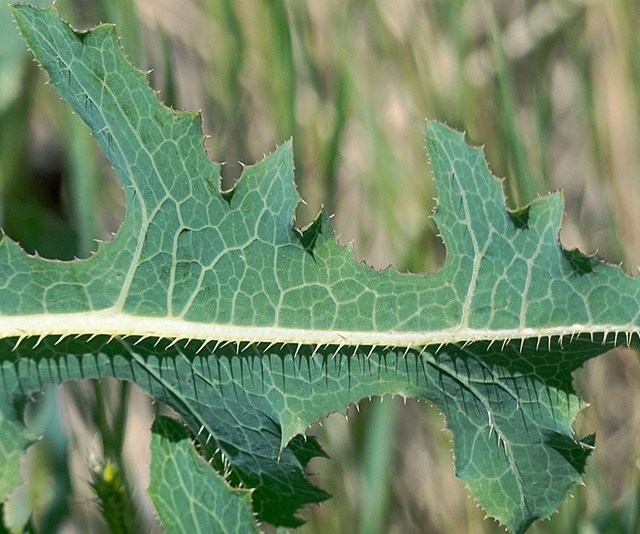 The milky sap, or latex, of the plant could be used to produce rubber. (Photo by Jared Bell, WSU)
The milky sap, or latex, of the plant could be used to produce rubber. (Photo by Jared Bell, WSU)
Scientists from Washington State University (WSU) claim that the common prickly lettuce demonstrates potential as a raw material for producing rubber. The prickly lettuce is a common weed and is a wild relative of cultivated lettuce.
WSU scientists have identified genetic markers in the plant that are linked to rubber content. This discovery paves the way for breeding plants with preferred qualities, as well as the development of a new cash crop for rubber production in the Pacific Northwest region.
I think there’s interest in developing a temperate-climate source of natural rubber. It would be really great if prickly lettuce could become one of those crops.
Ian Burke, a weed scientist at WSU and a study author
When lettuce that is cultivated in the garden bolts, it causes a milky white sap to bleed from its stem. The milky white sap that bleeds from the prickly lettuce holds promise as a cost-effective source of natural rubber and would help lessen the global threat to production of rubber.
Natural rubber is widely used in numerous products including, surgical gloves, condoms, boots and tires. Tire production represents approximately 70% of the global supply of rubber.
Disease is threatening the Brazilian rubber tree, which is considered to be the major source of natural rubber. Furthermore, synthetic rubber that is produced from petrochemical sources is used in more than 50% of the products made using rubber.
Burke analyzed numerous studies that were conducted previously on prickly lettuce and other types of related lettuce that are cultivated. A study that was published in 2006 caught the interest of Burke. This study had discovered that the latex from the prickly lettuce was quite similar to polymers that are in natural rubber.
“It occurred to me that we could grow the heck out of prickly lettuce in eastern Washington,” he said.
Burke surmised that understanding the genetics behind production of rubber in the plant was necessary for developing a feasible crop for the production of rubber.
Burke conducted the study along with Jared Bell, a doctoral student, and Michael Neff, a molecular plant scientist. They performed studies on two different types of prickly lettuce from eastern Washington. These two types had different leaf shapes, rubber content and tendency to bolt. Besides rubber content, the team also identified the genetic markers for the manner in which a plant grows, its bolting, the quantity of stems it produces, and its rubber content.
In cultivated lettuce, the preferred traits are abundant leaves, delayed bolting and a single stem. However, these traits are opposite to that of the traits that are desirable for production of rubber. Plants having multiple stems and early bolting would enable multiple harvests and help maximize yield of rubber.
If other traits such as water use efficiency are chosen, then it would allow the prickly lettuce plant to be grown in places having low rainfall. This would also allow it to be grown as a rotational crop.
This study titled “Genetic and biochemical evaluation of natural rubber from Eastern Washington prickly lettuce” has been published in the Journal of Agricultural and Food Chemistry.
A special U.S. Department of Agriculture/NIFA grant – “Biomass for Biofuels and Bioproducts from Weedy Plants” has provided funds for this study.
Reference